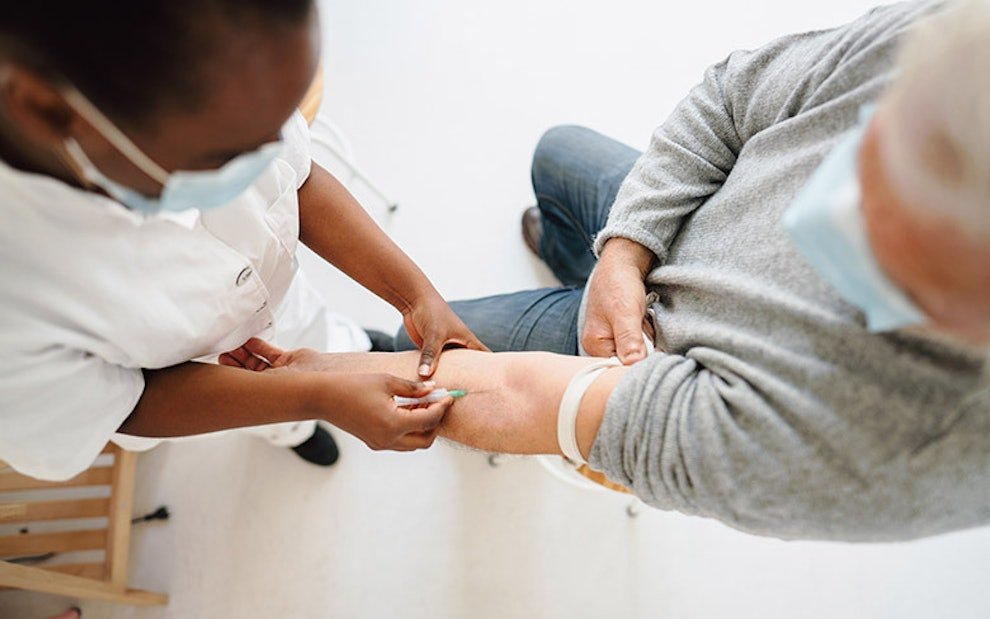The walnut-sized gland that sits below the bladder in men, the prostate, plays a vital role in the male reproductive system. However, prostate cancer is one of the most common cancers affecting men, especially as they age. Though often symptomless in its early stages, prostate cancer can cause problems with urination and sexual function as it progresses. Let’s delve into the symptoms, causes, and treatment options available for prostate cancer.
What is prostate cancer?
After skin cancer, prostate cancer is the second most common cancer diagnosed in American men and the second leading cause of cancer death in men, following lung cancer. Cancer disrupts the normal growth and death cycle of cells, causing them to multiply uncontrollably and form tumors. These tumors can spread to other parts of the body.
The prostate gland, a small organ located below the bladder in men, plays a crucial role in semen production and sperm health. Prostate cancer arises from uncontrolled growth of cells within the prostate. The majority of cases start in the back of the prostate, near the rectum.
Despite being a common cancer, prostate cancer is often treatable. It’s estimated that 1 in 8 men will be diagnosed with prostate cancer in their lifetime. Men over 65 and African-American men are at higher risk. A family history of prostate cancer, particularly in first-degree relatives or those with a family history of breast, ovarian, or pancreatic cancer (including female relatives), also increases the risk. Fortunately, most prostate cancers progress slowly and have a high survival rate, with a 97% five-year survival rate.

what are the 5 early warning signs of prostate cancer
1. Hematuria
Hematuria, or blood in the urine, can be a symptom of prostate cancer, but it’s important to note that it’s not a specific one. While prostate cancer can cause hematuria, especially in later stages, there are many other more common reasons for blood in the urine such as urinary tract infections or an enlarged prostate. If you experience hematuria, it’s important to see a doctor to determine the underlying cause. Early detection and treatment is key for managing prostate cancer, so don’t ignore this sign.
2. Frequent urination
Frequent urination, particularly at night, can be a warning sign of prostate cancer. This urgency to urinate arises because an enlarged prostate, cancerous or not, can press on the urethra, the tube that carries urine from the bladder. This pressure restricts the flow of urine and irritates the bladder, making it feel full even after urination. While frequent urination is a common symptom, it’s not exclusive to prostate cancer. Other conditions, like benign prostatic hyperplasia (BPH) or even urinary tract infections, can cause similar issues. If you experience a sudden change in your urination patterns, including increased frequency, especially at night, it’s important to see a doctor to rule out any underlying conditions.
3. Painful or burning urination
Painful or burning urination can be a symptom of prostate cancer, but it’s important to note that it’s not a specific indicator and can also be caused by other conditions. If you are experiencing this symptom, it’s best to see a doctor to get a diagnosis. Early detection is key to successful treatment of prostate cancer, so don’t hesitate to schedule an appointment.
4. Difficulty starting or stopping urination
Difficulty starting or stopping urination, also known as urinary hesitancy, can be a sign of prostate cancer. The prostate gland surrounds the urethra, the tube that carries urine from the bladder out of the body. When the prostate enlarges, either due to cancer or a benign condition like benign prostatic hyperplasia (BPH), it can squeeze the urethra and interfere with urine flow. This can lead to hesitancy at the beginning of urination, feeling like you can’t completely empty your bladder, or dribbling after urination. While prostate cancer can cause these issues, it’s more prevalent with BPH. If you’re experiencing urinary difficulties, it’s important to see a doctor to determine the cause and get appropriate treatment.
5. Erectile dysfunction
Erectile dysfunction (ED) itself isn’t a direct sign of prostate cancer, but it can be a clue, particularly if it’s a new issue. Prostate cancer treatments, like surgery or radiation, can damage nerves and blood vessels linked to erections, causing ED as a side effect. However, ED has many other potential causes. If you’re experiencing ED, especially alongside other urinary symptoms, see a doctor to explore the cause and get the right treatment.
Causes of prostate cancer
Diet
While research is ongoing, diet is considered a possible factor influencing prostate cancer risk. Some studies suggest a link between high intakes of red meat, processed meats, and saturated fat with an increased risk. Conversely, a diet rich in fruits, vegetables, and whole grains might offer some protection. It’s important to note that diet is likely one piece of the puzzle.
Obesity
Obesity isn’t directly considered a cause of prostate cancer, but research suggests a complex link. Men with higher body fat may be at an increased risk of developing a more aggressive form of the disease. This cancer might grow faster and have a poorer prognosis. Additionally, obesity can create an inflammatory environment within the body, potentially promoting cancer cell growth. While the reasons aren’t fully understood, maintaining a healthy weight may be beneficial for both preventing prostate cancer and improving outcomes if diagnosed.
Age
Prostate cancer is strongly linked to age, with the risk becoming much higher after a man turns 50. In fact, roughly 60% of prostate cancer diagnoses occur in men 65 and older. This age group may also face specific challenges when it comes to prostate cancer treatment.
Family history
While family history can influence prostate cancer risk, it’s not the sole determinant. Most cases occur in men with no family link. However, having a father or brother diagnosed with prostate cancer significantly increases a man’s chance of developing it.
How do you screen for prostate cancer?
In the context of medicine, screening refers to tests performed by a doctor to detect cancer before symptoms appear. The aim of cancer screening is early detection, allowing for treatment before the cancer spreads. For prostate cancer, the decision to undergo screening hinges on individual risk factors. Men with no symptoms and no family history can consider starting at age 45. However, those with a family history of prostate cancer or who are African-American may benefit from earlier screening, starting at 40. While there’s no single, universally accepted method for prostate cancer screening, two common approaches exist: the PSA blood test and the DRE.

Prostate-specific antigen (PSA) blood test
Prostate-specific antigen (PSA) is a protein produced by the prostate gland. Normally, healthy prostates generate minimal PSA. A rapid increase in PSA levels suggests a potential issue. While prostate cancer is the most concerning cause, other benign conditions can also elevate PSA, such as an enlarged prostate (BPH) or inflammation (prostatitis). Additionally, a man’s age, ethnicity, medical procedures, and medications can influence PSA levels. Doctors consider all these factors when interpreting the test. If a suspicion of cancer arises, a biopsy might be recommended for confirmation.
Digital rectal examination (DRE)
During a digital rectal examination (DRE), a medical professional inserts a gloved and lubricated finger into the rectum of a patient positioned on their side or bent at the waist. By feeling the rectum, the doctor can identify any unusual lumps or changes in the prostate’s size or texture. While this exam can detect abnormalities, it cannot definitively diagnose cancer.
Additional testing
Abnormal results from a PSA test or DRE often warrant a prostate biopsy to definitively diagnose prostate cancer. This procedure involves taking small tissue samples from the prostate for microscopic examination. Only the presence of cancerous cells in any of these samples confirms a prostate cancer diagnosis. During the biopsy, the patient lies on their side while a probe inserted into the rectum provides a prostate image. After numbing the prostate with anesthesia, a needle retrieves tissue samples through the probe. The number of samples collected depends on the initial PSA and DRE results.

Treatments of prostate cancer
- Watchful waiting or active surveillance
- Surgery
- Radiation therapy and radiopharmaceutical therapy
- Hormone therapy
- Chemotherapy
- Targeted therapy
- Immunotherapy
- Bisphosphonate therapy


